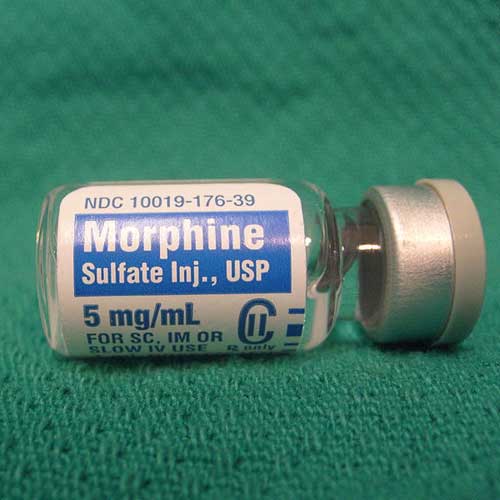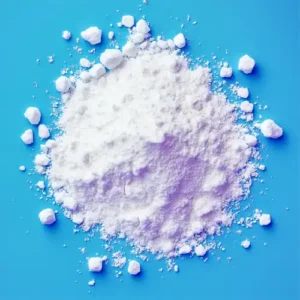The drug that we know as Morphine was first identified in Germany in the early 1800s. The drug was so strong that the doctor who identified the drug named it after Morpheus, the God of Dreams in Greek Mythology.
Morphine quickly became a popular painkiller and was used widely during the American Civil War. However, its addictive properties and potential for abuse soon became apparent. As a result, many countries passed laws regulating the prescription and use of Morphine.
Despite this, the drug continued to be used as a painkiller for many years, and its use is still common today. However, it is now only given in controlled doses and under strict medical supervision.
What Is Morphine?
Morphine belongs to a group of drugs known as opiates. Morphine is derived from raw opium from the poppy plant. Morphine is a painkilling drug and is one of the most effective drugs known for pain relief so is mostly used to treat moderate to severe pain and severe coughs. Morphine can also be used to ease pain before, during and after operations.
Morphine is a powerful drug that is widely used in the medical field for its ability to manage all manner of pain. The drug is particularly effective in treating severe or chronic pain that other medications may not be able to alleviate. The chemical composition of Morphine includes an opiate compound that interacts with the brain’s receptors to produce a numbing effect, which helps to dull sensations of discomfort. The drug is most commonly administered in hospitals and clinics, where it is used to manage pain in patients who are recovering from surgeries or other medical procedures.
The use of Morphine is not without its risks, however. The drug is highly addictive, and patients who take it for extended periods may develop a tolerance that requires ever-increasing doses of the medication. Additionally, Morphine can cause side effects such as dizziness, nausea, and confusion, which can make it difficult for patients to function normally. It is important for patients to work closely with their doctors when taking Morphine to ensure that they are taking the appropriate doses and are not experiencing any harmful side effects.
Despite the risks associated with its use, Morphine remains a critical medication in the medical field for managing pain. Its ability to effectively relieve pain makes it an essential tool in treating patients who are dealing with severe discomfort or who are recovering from major medical procedures. As with any medication, it is important for patients and doctors to carefully consider the risks and benefits of Morphine before deciding to use it for pain management.
Is Morphine An Opiate Or An Opioid?
The terms Opiate and Opioid and narcotic are often used interchangeably in the media. Just what is the difference? And is Morphine an Opiate or an Opioid?
Opiate
Generally, Opiate refers to natural substances that are derived from opium. Opium is derived from the opium poppy and includes chemical compounds, such as Morphine and Codeine. Therefore, classic examples of Opiates are Codeine and Morphine. Interestingly, ancient civilisations discovered these natural compounds thousands of years ago, using opium poppies in traditional medicine well before modern extraction methods were developed.
Opioids
These types of drugs work by binding to the same receptors as opiates. However, they do not occur naturally. There are two types — semi-synthetic or synthetic Opioids. While synthetic opioids are man-made chemically, semi-synthetic opioids are a mixture derived from chemical modifications to natural opiates. Scientists continue to develop new synthetic opioids in labs today, striving to create more effective pain management solutions with fewer side effects.
Fentanyl and Methadone are examples of synthetic opioids. Hydrocodone and Oxycodone are examples of semi-synthetic opioids.
Opioid vs Opiate
Generally, media commentators have turned away from differentiating between opiate and opioids. Often you will hear the term opioid for both natural or synthetic (or semi-synthetic) substances that work on the main opioid receptor systems (there are three — mu, kappa, delta). If the term opiate is used it commonly means the naturally occurring substances within the opioid class. Healthcare professionals typically use precise terminology, distinguishing between opiates and opioids when discussing specific medical treatments or research.
What Does Morphine Look Like?
Morphine comes in many different forms. You can get syrup, liquid for syringes, pills and capsules. Morphine pills and capsules look different depending on their strength and manufacturer. Each formulation is carefully colour-coded and imprinted with unique identifiers to help healthcare providers and patients avoid confusion between different dosage strengths.
What Are The Immediate Effects Of Taking Morphine?
Morphine will provide relief from pain and gives the patient a sense of well-being. Opiates in general slow down breathing, heart rate and brain activity and as a result the body’s tolerance to pain is increased. Morphine also suppresses the cough reflex which is why it is used to treat severe coughs. Morphine does have side-effects, two of the most common are constipation and nausea and with higher doses of morphine, additional drugs to relieve or prevent these symptoms may be needed.
Morphine is commonly abused. People may experience euphoria due to morphine. Frequent use of morphine leads to tolerance and dependence.
What Are The Long-term Effects Of Taking Morphine?
When morphine is prescribed by a doctor for the treatment of pain and are taken in the prescribed dosage, they are safe and there is little chance of addiction. However, when morphine is not used for medical uses and is abused by being taken in excessive doses, addiction can result and so you should never stop taking it suddenly. If you stop taking the drug suddenly withdrawal symptoms can occur. The severity of the symptoms will depend on the amount of drug taken and for how long. Withdrawal symptoms may include uneasiness, diarrhoea, abdominal cramps, nausea, chills and insomnia.
What Class Of Drug Is Morphine?
Morphine is a class A drug, it is only legal for a person to possess morphine if it has been prescribed for that individual. The maximum sentence for unlawful possession is 7 years imprisonment and a fine. The maximum sentence for supplying is life imprisonment and a fine.
Photo Credit: Vaprotan
Zoom Testing is a leading UK drug testing company and a supplier of Drug Test Kits.
This post was originally published in October 2018 and has been updated since.





